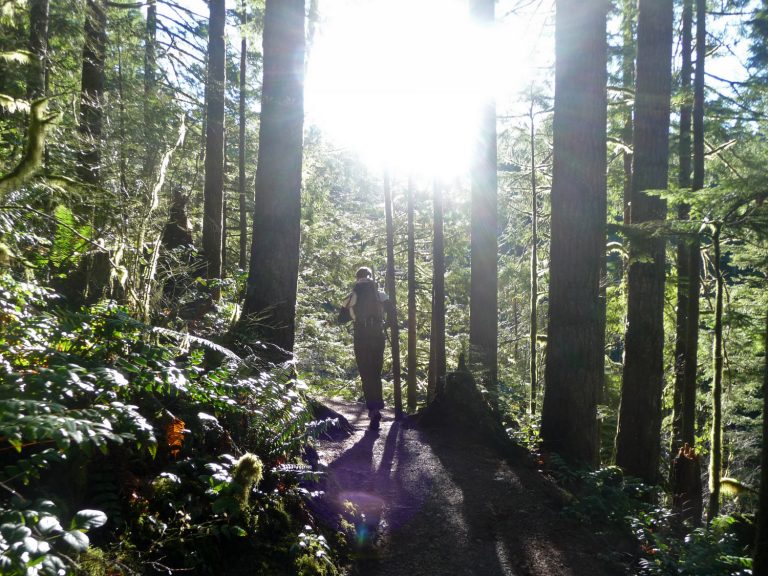
Things had not gone exactly as planned for Louis, Julia, and their three-year-old twins Melissa and Victor. For a couple of years, they had been budgeting for supplies, learning survival skills, and even made bug out plan full of contingencies. The plan was simple but all the details were meticulously addressed by the couple, throw a few pre-packed bags into the car and drive the 90 miles to Julia’s grandparents farm.
Louis didn’t have thousands of dollars to spend on the best AR-15 that money could buy. Besides budget constraints, they were illegal to own in his home state anyway. So, Louis lovingly maintained his .357 revolver. After using his revolver to “clear the road” while getting out of town, the shook up the family quietly made the rest of the drive to Julia’s family farm.
That was until high water was blocking the road only 20 miles from their destination. Because of their maps and pre-planning, Louis and Julia knew the way around the water, along the two-lane country roads, and through the little towns to their destination. Inside, Louis was emotional after firing his weapon. He played the cool-headed strong father that his family needed. He wasn’t real keen on getting off the highway and doubling the amount of time they would spend on the road. Even though they had done a “map recon” the road ahead was not so clear. Louis figured he had enough ammo to protect his family but he wished there was a way to resupply before heading on the road less traveled…..
Many people, when first joining the preparedness community initially focus on guns and ammo. They want nice, useful, and effective weaponry and enough ammunition to last for years and years before needing to purchase more. After a few years of prepping and a few years’ worth of trips to the rifle range, those once fired brass rifle and pistol cartridges can really pile up, assuming they are collected after shooting.
With about $300 to $400 invested in reloading equipment, all those hundreds or even thousands of once fired brass casings can be reloaded for a tremendous savings over buying factory new ammunition. Sometimes the savings can be as drastic as 80% of the price of purchasing new ammo! Most preppers on a budget can really appreciate that amount of savings. So, many people will buy a single stage reloading press and keep the equipment at their primary residence, where it makes sense to store it, and cut the cost of their preps by reloading. But can reloading equipment be worthwhile to bring on a bug out?
Bugging out with reloading capacity
When most people consider reloading equipment, their thoughts are of single stage reloading presses or progressive reloaders. This equipment is a great addition to anyone’s preps. But this stuff is heavy and bulky. Also, progressive loaders are best set up in the most efficient manner and left in place, not toted around in a suitcase or ruck sack. A single stage press can be more easily mobile than a progressive loader but is still not practical to pack along, even on a vehicle bug out or for an INCH kit when space and weight are limiting factors.
That leaves a cartridge loader set for consideration as a practical way to include reloading in a bug out plan. Even though cartridge loaders and cartridge loader kits have limitations, they can be very effective tools to maintain an ammunition supply in a survival or grid down scenario. In the following discussion, these three reloading set ups will be examined for their strengths and weaknesses as related to bug out applications and some of the limitations of the different equipment will be addressed with recommendations to improve their practicality.

When most people consider reloading equipment, their thoughts are of single stage reloading presses or progressive reloaders.
The Cartridge Loader
Most people begin reloading with a single stage press. It may not be the fastest method. It may not be the cheapest option either. However, the single stage press produces the consistent, accurate, and high quality ammunition that makes people want to start and continue in reloading. The single stage press is less mechanically complicated and less expensive than the progressive loader. It is easier to maintain consistency and precision with a single stage press than it is with a cartridge loader. For these reasons, the overwhelming choice for beginning reloaders is the single stage press.
A single stage press makes a perfect set up for reloading to cut cost and maintain ammo supply at a home base. Some people will choose to buy a progressive loader after using a single stage press for a period. If the single stage press is replaced with a progressive loader in the home set up, it is a great idea to cache the single stage press that is no longer being used at a bug out location. Additionally, learning to reload and reload well on a single stage press will help the hand-loader get the best performance out of a cartridge loader. Because of size and weight considerations, the cartridge loader is the practical and effective equipment choice for reloading on the run.
Cartridge loader sets, similar to the Lee Classic Loader for example, have been in use since the proliferation of the metallic cartridge. Often, these were sold along with a new firearm just as safety locks are sold with new guns today. In the 1870’s it was likely that the local general store may not have ammo for a person’s new firearm, so the cartridge loader allowed the owner to keep firing his / her weapon after all the cases were spent. The principles of using the antique cartridge loaders and the modern ones are basically the same. The body of the cartridge loader, like the Lee Classic Loader, is assembled in different ways and struck with a dead blow or non-marring mallet to perform the different reloading tasks of depriming, forming, and bullet seating. These little kits are caliber specific, like a set of dies, and come with a little powder dipper. To get the best performance out of these kits and make them a viable bug out option, their limitations must be understood and minimized.
The Lee Classic Loader comes with the tools needed to perform the reloading steps of depriming, sizing, priming, and bullet seating. It also includes a powder dipper. However, there are a few extra things that will help with reloading ammunition on the move.
A case mouth deburring tool is small, inexpensive, and useful for cartridge prep. Also, a dial caliper is needed to check cartridge case length and overall cartridge length. Additionally, a hard-plastic case for the dial caliper is necessary to protect it from damage. Finally, the issue of measuring powder must be addressed. A receiver failure during bug out would be unacceptable.
The included powder measure is not acceptable as is, and was never intended to be a standalone powder measuring device for bug out reloading. There are many companies that will make custom powder dippers to exact specification and unless a scale is carried around this is a necessary purchase to add to this reloading kit. Even with the best custom powder dipper, some variation in powder charge from load to load is to be expected. To help minimize the variations, test the powder measure at home before adding it to the kit.
Scoop the powder gently the same way each time so that more powder by weight is not compacted into the scooper. Level it by either tapping or by scraping across the top but do it consistently. Then, weigh the results on a scale to get an average weight and learn the best and most consistent technique. With powder charges, consistency is important!
It is also necessary to add some case lubricant to the kit. Finally, the kit needs a nonmarring or dead blow mallet to power the loading tool. The overachiever could add a cylinder type case length gauge to the kit as well. This reloading set up fits in a small toiletry bag with plenty of room to spare. Add some powder, primers, and bullets for a complete mobile reloading station capable of maintaining and extending a person’s ammunition supply.
There are limitations to this mobile reloading kit. Most notably, it is powered by a hammer which makes lots of noise. A bug out may not always include active evasion but it rarely includes active attention seeking either. For the rural settings, the noise of a hammer banging away carries a long distance over an open area. And if sheltering in an abandoned building in an urban setting, the banging noise will likewise give away one’s location.
This kit is used in the interim to maintain the ammunition supply. It can be enhanced greatly by the addition of a few extra reloading tools cached at the bug out location. A triple beam balance powder scale and a powder trickler are inexpensive and would greatly improve the accuracy and consistency of ammunition loaded with the kit if these were placed ahead of time at the bug out destination. A hand priming tool would be convenient and easy to use.
Additionally, a case trimmer and a cylinder type cartridge minimum / maximum case length gauge could go a long way to increase the number of times a cartridge could be reloaded in an extended bug out. A few extra tools in cache will greatly improve the reloading ability. Of course, if a reloader had a progressive loader set up at home as a primary reloading means, the older and no longer used single stage press could also be left at the bug out destination. With these extra larger tools left at the bug out location and some components in cache, the survivalist can greatly extend his / her ammo supply.
In conclusion, many people do not consider reloading on a bug out to be viable because of the size and weight of traditionally considered reloading equipment. However, when packing for a vehicle bug out or putting together an extensive INCH kit, there is a great opportunity to include reloading equipment. By thinking outside of normal applications for reloading equipment, the resourceful prepper can benefit greatly from adding reloading to his / her tool kit. Aside from saving money in good times, reloading can stretch and extend the ammunition supply in an extended survival scenario. Aside from just stockpiling more and more ammo, give these reloading set ups some serious thought and consider how including reloading can benefit preparedness.






















